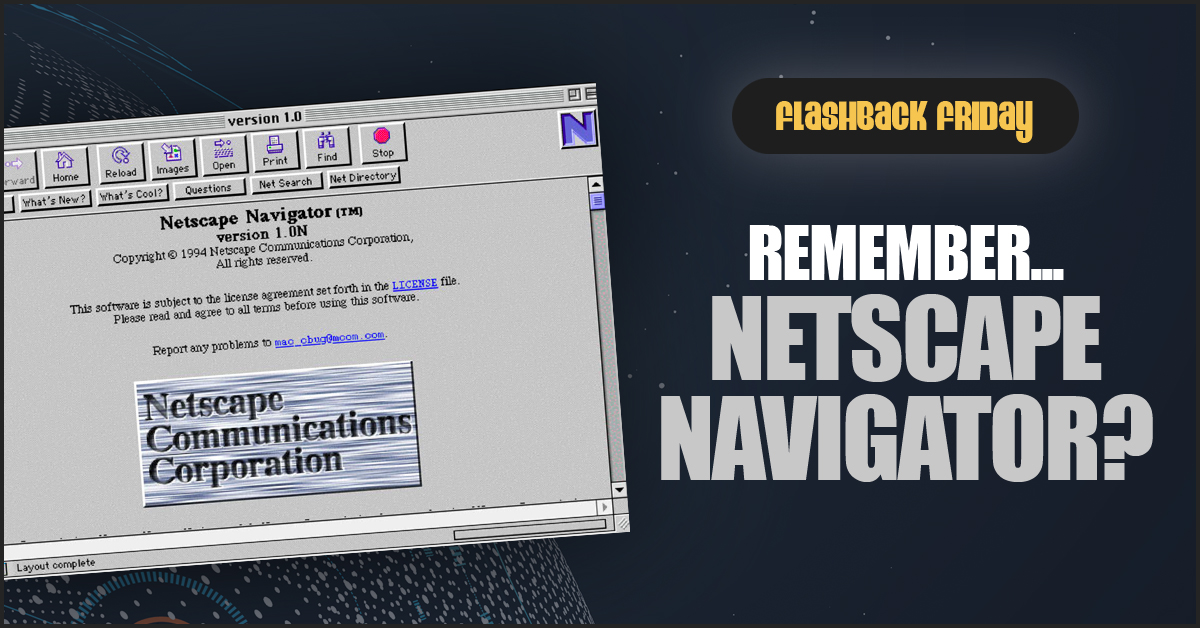Do you remember the very first Netscape Navigator web browser? It made the internet accessible to everyone.

Most of us elder citizens of the web recall the first consumer friendly and freely available browser called Netscape Navigator. Internet users today, could not imagine a time when there was no extensive connectivity, but it was during the early days of the web, that universities and the military first began to see the tremendous communication opportunities via the internet. In 1992, Marc Andreessen joined the National Center for Supercomputing Applications (NCSA) at the University of Illinois. At the same time, the era of company owned and operated supercomputers was ending. More cost-efficient workstations running on microprocessors replaced them.
Andreessen graduated the University of Illinois where he led a team of IT people who developed a software project called “Mosaic.” The early users of Mosaic were other universities and research facilities including the Defense Advanced Research Projects Agency (DARPA). The purpose of Mosaic was linking all the users together – and forming the genesis for the internet.
Netscape Revolutionizes Computer Use
The first users of the early internet were IT types with some programming skills. These skills were needed as everything connected to the internet had different interfaces. So, Andreessen pushed NSCA to link everything together using software based on his university work with Mosaic. In 1993, the Mosaic browser was launched and users could roam the internet. That was the theory, to test it, NCSA used the internet to distribute Mosaic for free as a download from the internet. It worked, and users could connect to the internet.
Features of Netscape Navigator 1.0 December 1994
The success of Mosaic captured the attention of Jim Clark, the founder of Silicon Graphics. He convinced Andreessen to join him in commercializing Netscape. They decided that the new browser would be free to make sure it was successful.
The first offering of Netscape was in 1994 and called the Netscape Navigator. After its release, “Best if Viewed with Netscape Navigator” became ubiquitous on many sites across the net.
One radical change made by Netscape in its first version of Navigator was the ability to see a web page on-the-fly, and text and graphics appeared on the screen as they downloaded. Before the first release of Netscape, a site could only be viewed after it was fully downloaded – many early users hated this delay fixed by Netscape.
Other features included email support, basic HTML 2 support, and some HTML 3 functionality, and TCP/IP. A press release offered the following information:
- “Continuous document streaming, enabling users to interact with documents while they are still being downloaded rather than waiting for the entire document to load.
- Multiple, simultaneous network accesses, allowing several documents or images to be downloaded simultaneously.
- Native support for the JPEG image format.”
The Navigator when first launched was the only way to access the internet; there were no competing browsers. The following year, Microsoft introduced MS Internet Explorer and Mozilla released its Firefox Browser. By the late 1990s, Navigator lost much of its user base and was bought by AOL. There it underwent less technological advances and died a quiet death in February of 2008.
LAN Infotech in Fort Lauderdale is the trusted source for the information you need to keep up with information technology tips, trips, and news. Contact us at (954) 717-1990 or by sales@laninfotech.com.

LAN Infotech is a Microsoft Cloud Services Provider, IT Managed Support company and a leader in helping law firms, nonprofits and medical organizations deploy cloud solutions, manage computer networks, keep data protected and top technology management company. Businesses like yours need technology support to run highly-effective organizations.


